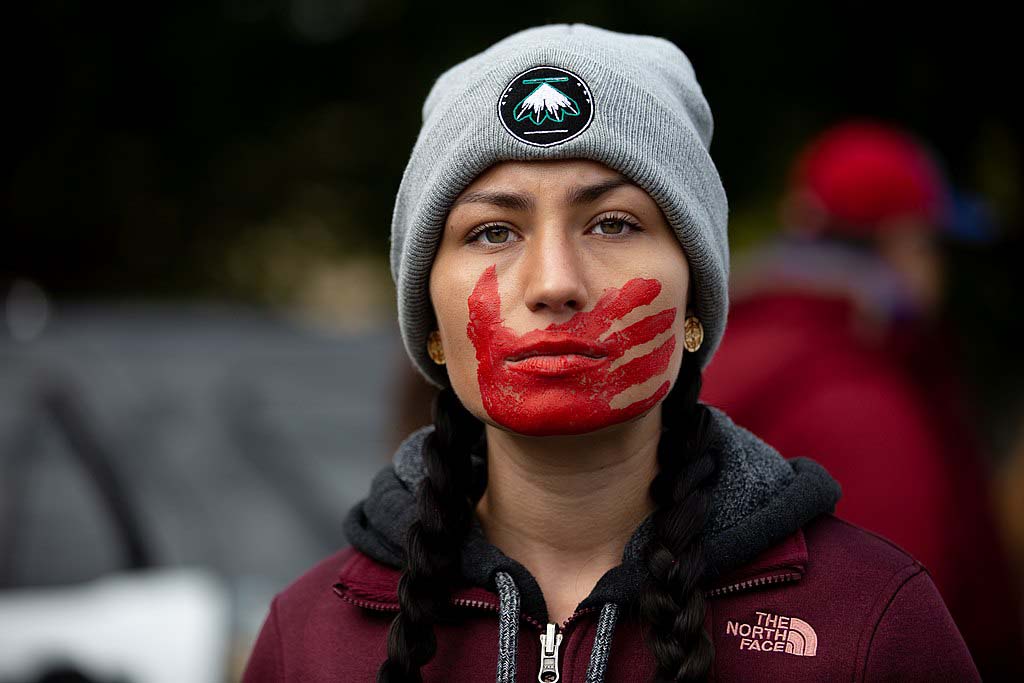*Editor’s Note: The “Views from NAU” blog series highlights the thoughts of different people affiliated with NAU, including faculty members sharing opinions or research in their areas of expertise. The views expressed reflect the authors’ own personal perspectives.
By Raymond D. Austin
Professor, Department of Applied Indigenous Studies
The U.S. government’s statistics show that, regardless of sex or gender, American Indians and Alaska Natives (AI/AN) are victims of violent crime at more than twice the rate of any other race in the United States.[1] Indigenous women are victims of rape, domestic violence and other crimes at rates higher than any other race.[2] Murder “is the third-leading cause of death for AI/AN women in the United States.”[3] In 2016, 5,712 cases of missing and murdered Indigenous women were reported in the United States.[4] Non-Indians, primarily whites, commit most of the crimes against Native individuals.[5]
Non-Indian violence against Native people dates to 1492. The subject, however, was not in the nation’s consciousness until recently. The Native peoples’ advocacy, with help from allies, and the election of Native representatives to Congress finally shed light on this national disgrace. Recently, President Biden signed an executive order to commit federal resources and develop strategies to combat the crisis of missing and murdered Indigenous people.[6] The executive order will implement two laws that Congress passed in 2020: 1) Not Invisible Act of 2019[7]; and 2) Savanna’s Act.[8] Both laws mandate the federal government, through the Interior Department and Justice Department, to coordinate efforts with Native nations and law enforcement agencies to find solutions to the murder, trafficking and disappearance of Indigenous persons. The laws and executive order also require the federal departments to allocate resources to Native nations’ law enforcement agencies for training, data collection, grants and other tools to effectively respond to violence against Native individuals. Another purpose is to help Native nations implement the special domestic violence criminal jurisdiction provisions of the 2013 Violence Against Women Reauthorization Act.[9]
The high rates of crime against Native persons are attributable to nearly 240 years of racist and destructive federal Indian policies and the confusing jurisdictional maze that is criminal jurisdiction in Indian country. Especially destructive was the assimilation policy that directly targeted and nearly extinguished Native cultures, religions, languages, homelands and the Native population. Federal laws from the 1800s and two centuries of U.S. Supreme Court jurisprudence combine to define the term “Indian country,” determine the crime to be charged and the sovereign (federal, state or Native nation) with power to investigate, charge and prosecute. This is the only area of U.S. law where race is the underlying determinant of sovereign criminal power—the races of the perpetrator and victim determine the sovereign with criminal jurisdiction. For example, the Supreme Court ruled that Native nations cannot charge and prosecute non-Indians who commit crimes against Native persons on Native lands.[10] This ruling created a path for non-Indians who commit crimes on Native lands to escape prosecution. The best solution would be for Congress to revise archaic federal criminal laws and overturn Supreme Court rulings that create jurisdictional confusion. Congress has refused to act.
The next best strategy is to educate students entering the criminal justice field on the complexities of criminal jurisdiction in Indian country. The Applied Indigenous Studies Department is doing just that through carefully designed and selected courses that lead to an undergraduate degree in Indian Country Criminal Justice. NAU’s program is the first and only one of its kind at any university in the nation. The program was developed and approved pursuant to NAU’s Strategic Goal 3: “Become the nation’s leading university serving Native Americans.”
Top image: A participant in the Greater Than Fear Rally & March in Rochester Minnesota. The rally & march were held in response to President Trump’s Rally at the Mayo Civic Center in downtown Rochester. This file is licensed under the Creative Commons Attribution-Share Alike 2.0 Generic license. Photo credit: Lorie Shaull
[1] U.S. Department of Justice, Bureau of Justice Statistics (Dec. 2014).
[2] André B. Rosay, Violence Against American Indian and Alaska Native Women and Men, U.S. Department of Justice, National Institute of Justice (June 2016).
[3] U.S. Senate Report No. 116-214 (Feb. 2020).
[4] Urban Indian Health Institute Report, Murdered Indigenous Women and Girls (2019). These crimes are underreported.
[5] U.S. Department of Justice, National Institute of Justice, Five Things About Violence Against American Indian and Alaska Native Women and Men (May 2016); Lawrence A. Greenfield & Steven K. Smith, American Indians and Crime, U.S. Department of Justice, Bureau of Justice Statistics (Nov. 2011).
[6] Executive Order No. 14053 (Nov. 15, 2021).
[7] Public Law No. 116-166, 134 Stat. 766 (Oct. 10, 2020).
[8] Public Law No. 116-165, 134 Stat. 760 (Oct. 10, 2020).
[9] Public Law No. 113-4, 127 Stat. 54 (2013). Although the VAWA has not been reauthorized as of today, the special criminal jurisdiction provisions remain the law.
[10] Oliphant v. Suquamish Indian Tribe, 435 U.S. 191 (1978).



